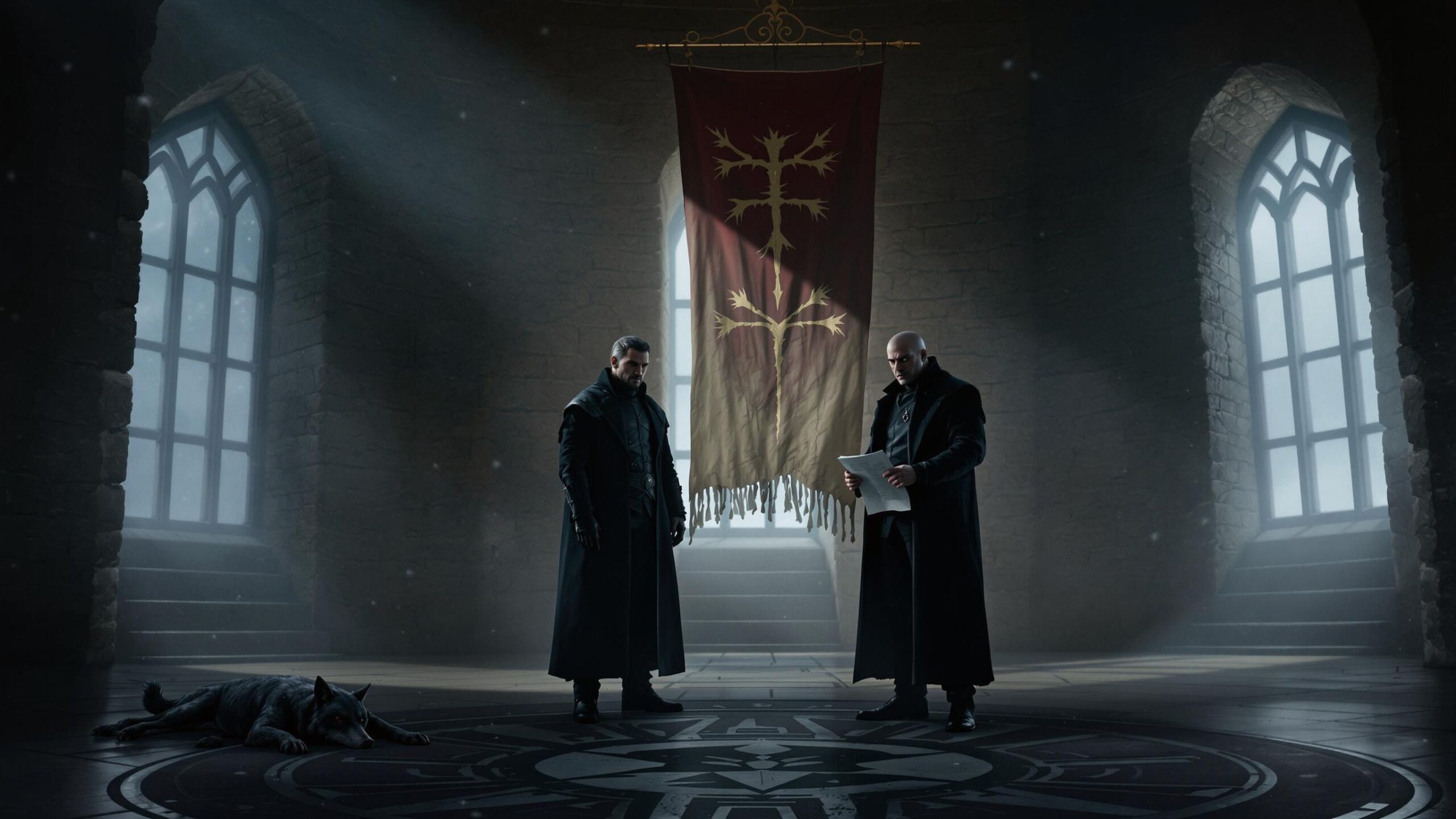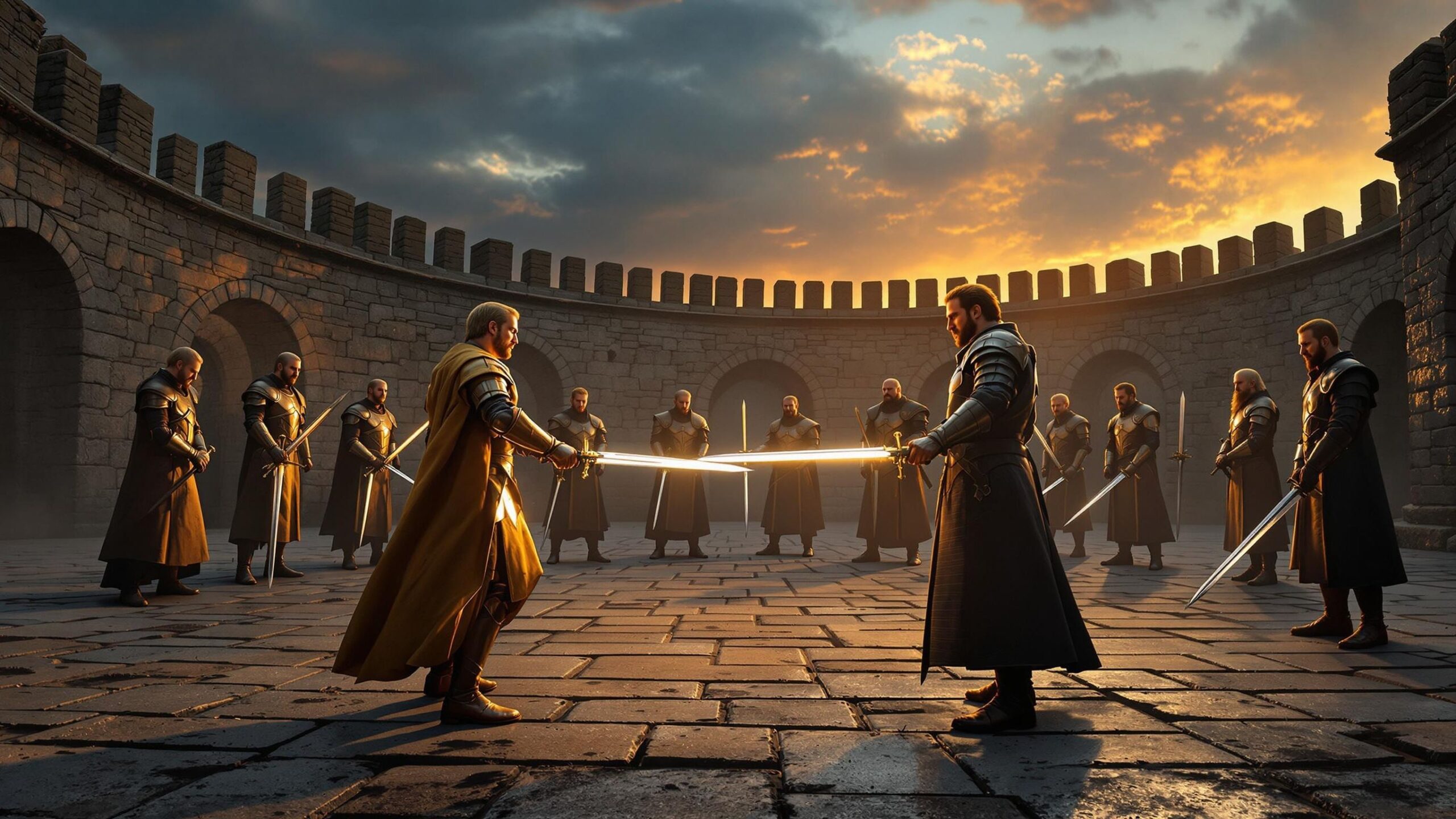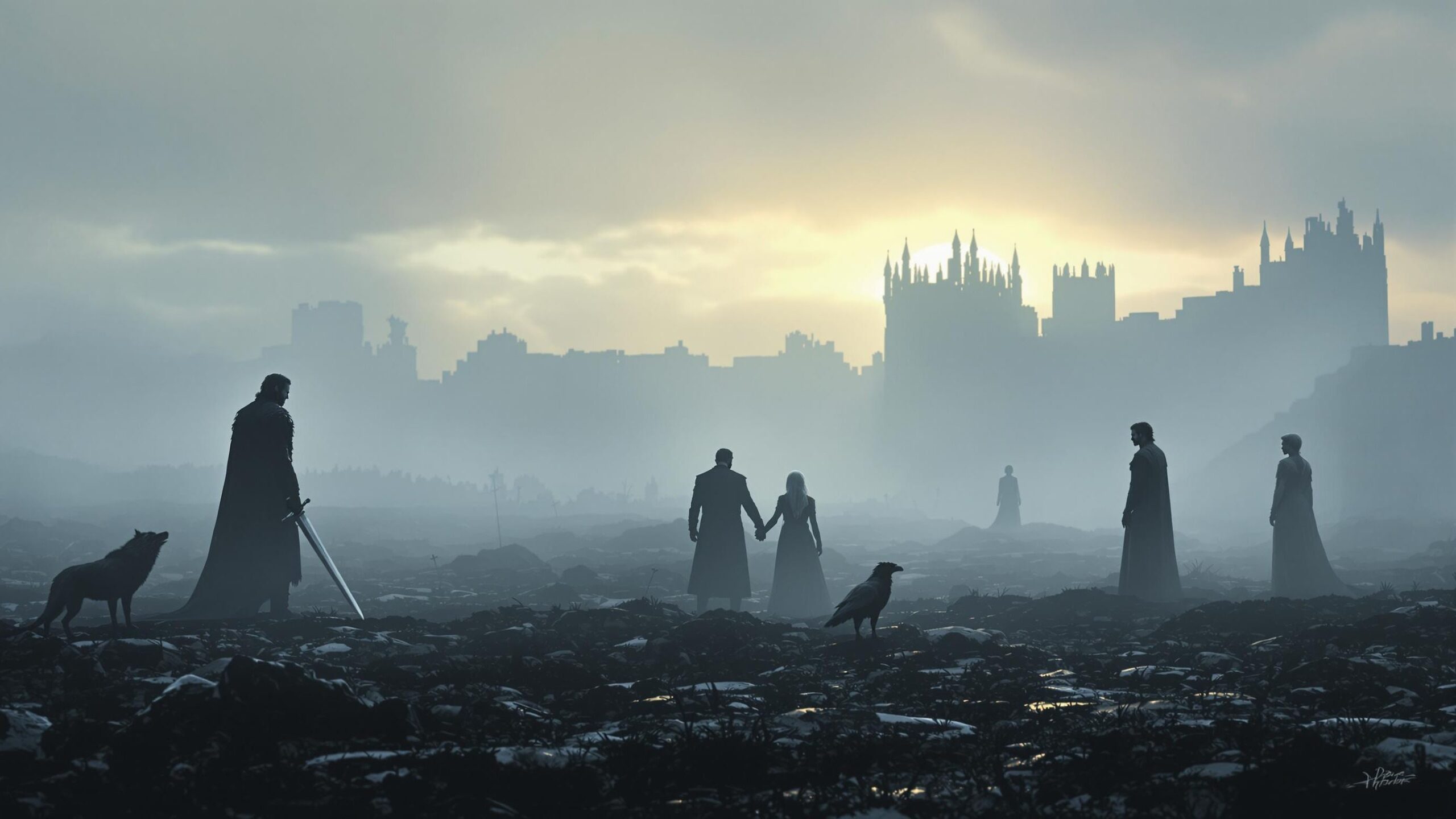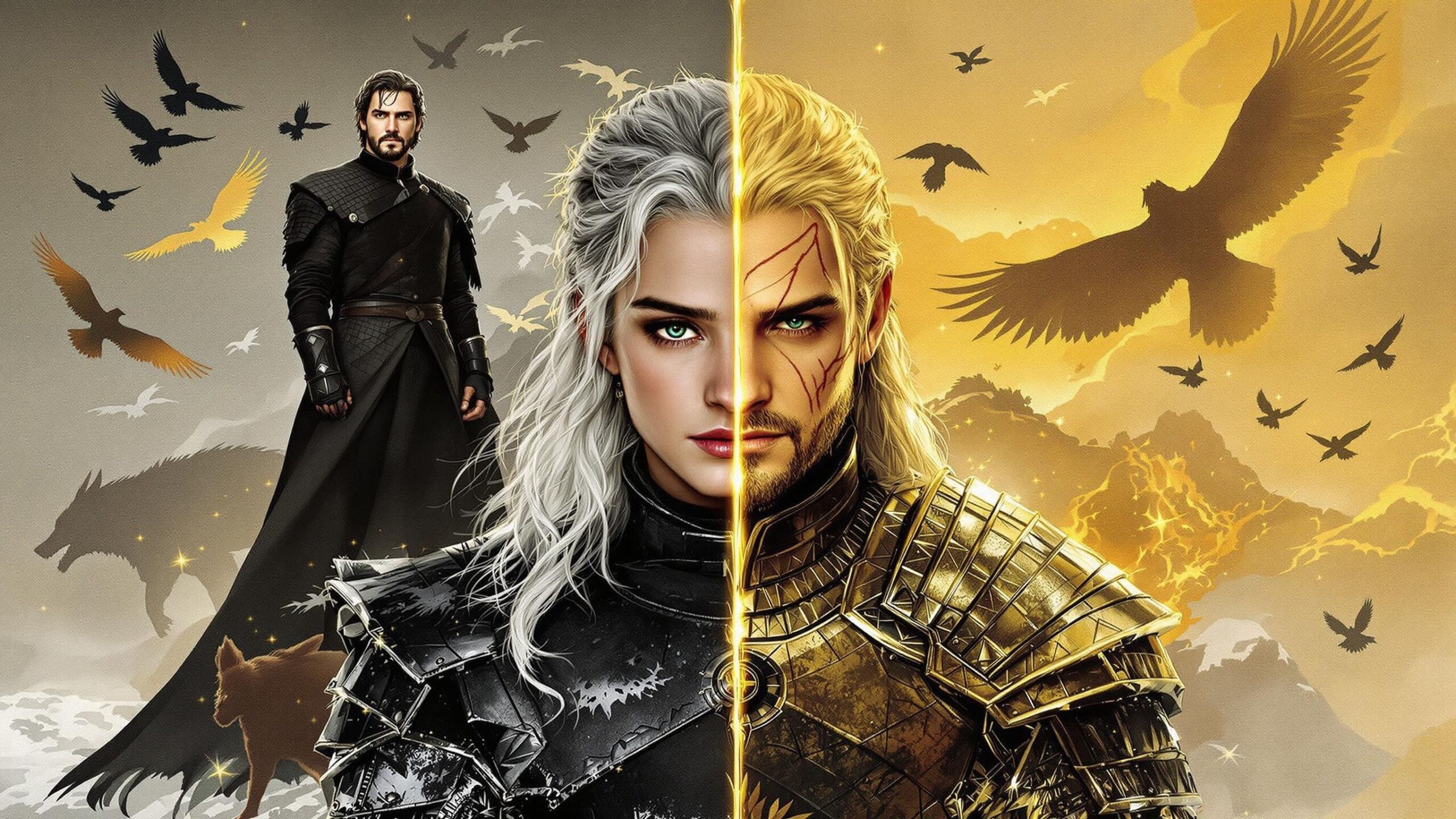House Bolton carved its name into the darkest chapters of Game of Thrones history, not through honor or chivalry, but through terror, torture, and betrayal. Their sigil—a flayed man—was not just for show, but a chilling testament to their legacy of cruelty. Under Roose and Ramsay Bolton, the house became synonymous with sadism, serving as a grim counterpoint to the nobler houses of the North. Whether through political cunning or unrestrained brutality, the Boltons showed that power could be seized through fear alone. Below are the ten most ruthless moments that defined House Bolton’s reign of terror across Westeros.
#10: The Betrayal of Robb Stark at the Red Wedding
Roose Bolton’s most infamous act wasn’t done with a blade in his hand, but with a dagger to the back—figuratively and literally. As one of Robb Stark’s trusted bannermen, Roose’s betrayal at the Red Wedding marked a turning point in the War of the Five Kings. He played the long game, coordinating with Tywin Lannister and Walder Frey to orchestrate the massacre of the Stark family. His whispered words—“The Lannisters send their regards”—before stabbing Robb are among the most chilling in the series. The Red Wedding wasn’t just war—it was a cold-blooded extermination of House Stark’s future, and Roose wore his treachery like armor.
#9: Ramsay’s Torture and Transformation of Theon Greyjoy
Ramsay Snow, Roose’s bastard son, redefined the meaning of psychological and physical torment. His prolonged, sadistic torture of Theon Greyjoy wasn’t just about punishment—it was a complete destruction of identity. Ramsay flayed, mutilated, and dehumanized Theon, ultimately reducing him to “Reek,” a broken shell of a man. This act wasn’t about strategy; it was about domination. The scenes of Ramsay mentally tormenting Theon—making him beg, scream, and obey—were among the most disturbing in the series. It was a display of cruelty so complete that Theon forgot his name and his past, showing how House Bolton’s brutality could obliterate the soul, not just the body.
#8: Flaying of the Stark Loyalists
After taking Winterfell, the Boltons set about consolidating their power through sheer terror. One of the most horrifying examples was the flaying and public display of Northern lords who remained loyal to the Starks. Their bodies were strung up, skinned, and showcased as a warning to others. This wasn’t a tactic of war—it was psychological warfare. Roose and Ramsay used pain and spectacle to keep the North in line, proving that they didn’t care for the traditions of Northern honor. To them, rule through fear was not just effective—it was preferred.
#7: Ramsay’s Hunt of Myranda’s Rivals
While this moment wasn’t a grand political move, it showcased Ramsay’s deeply personal cruelty. When Myranda, his twisted lover, became jealous of other women Ramsay showed interest in, he took them on hunts—releasing them into the woods, only to hunt them down with dogs and bows. The idea of a lord hunting human beings for sport, simply to satisfy a lover’s whims, was a new level of barbarity. These actions were never punished or even hidden; they were part of Ramsay’s legend. It wasn’t about justice or dominance over political rivals—it was pure, predatory amusement.
#6: Roose’s Execution of Locke
When Locke captured Jaime Lannister and Brienne of Tarth and brought them to Harrenhal, Roose Bolton demonstrated that even mercy came with cruelty. Roose allowed Locke to brutalize Jaime—leading to the loss of his sword hand—then offered a kind word and sent Jaime back to King’s Landing. But when Locke failed to produce results at the Wall during a later mission, Roose coldly ended his usefulness. The Boltons didn’t hesitate to use pawns and discard them. Loyalty meant little if it wasn’t useful, and Roose’s cold-blooded strategy emphasized his disdain for traditional fealty.
#5: Ramsay’s Murder of His Family
Once legitimized as a true Bolton, Ramsay wasted no time eliminating his potential rivals—including his own newborn half-brother. After Roose congratulated him on becoming a brother, Ramsay drove a dagger into his father’s chest, seizing control of the house. But the true horror came after: Ramsay lured Roose’s wife, Walda Frey, and her baby to the kennels, releasing the hounds on them as she begged for mercy. It was a moment of total, calculated brutality. Ramsay didn’t just want power—he wanted to obliterate anyone who could challenge his legacy, even if it meant killing his own blood.
#4: The Public Humiliation of Sansa Stark
Ramsay’s marriage to Sansa Stark was meant to be a political move that legitimized Bolton control of the North, but it turned into one of the series’ most horrific personal abuses. Ramsay physically, emotionally, and sexually abused Sansa, flaunting his power and treating her as a pawn. He forced Theon to witness her suffering, deepening the psychological torment. This act solidified Ramsay’s reputation not just as a villain, but as a personification of systemic cruelty. His treatment of Sansa wasn’t just personal—it was a declaration to the North that even highborns were not safe from Bolton depravity.
#3: Ramsay’s Use of Dogs to Devour Enemies
Ramsay didn’t just use dogs for hunting—he used them as executioners. Whether feeding captives to them or threatening his enemies with the same fate, his kennels became a symbol of terror. Most memorably, he set his starving hounds upon Theon and Sansa, and later upon Rickon Stark’s corpse and eventually on himself. The idea that Ramsay trained animals to tear apart his enemies wasn’t about efficiency—it was about theater. It turned death into a spectacle. The dogs weren’t just weapons; they were an extension of Ramsay’s inhumanity.
#2: The Death of Rickon Stark
In a twisted game of psychological warfare, Ramsay used Rickon Stark—Ned Stark’s youngest son—as a tool to break Jon Snow’s spirit before the Battle of the Bastards. Releasing Rickon and ordering him to run, only to shoot arrows at him from a distance, Ramsay played with death like a game. The moment Rickon almost reached Jon, only to be killed by a final, fatal arrow, was devastating—not just for Jon, but for viewers who saw hope die with Rickon. It was pure sadism dressed in strategy, and it sent Jon Snow into a reckless charge that nearly doomed his army.
#1: The Flaying of Winterfell
Perhaps the most symbolic of all Bolton atrocities was their desecration of Winterfell. After taking the Stark stronghold, they not only slaughtered its defenders—they erased its identity. The Stark banners were torn down, replaced with the Bolton flayed man. Servants were butchered, and the Stark crypts were defiled. The Boltons turned Winterfell, a symbol of Northern honor, into a monument of fear. Their occupation wasn’t just military—it was psychological colonization. The cold halls of Winterfell, once warmed by the Stark family, became a place of silence, blood, and horror under Bolton rule.
The legacy of House Bolton is not one of power earned, but of terror wielded. They did not conquer hearts or inspire loyalty—they ruled through flaying knives, manipulation, and psychological destruction. Their fall was as violent as their rise, and few mourned the end of their reign. In the end, their cruelty was their undoing—because even in Westeros, there are limits to how long fear can sustain power.




